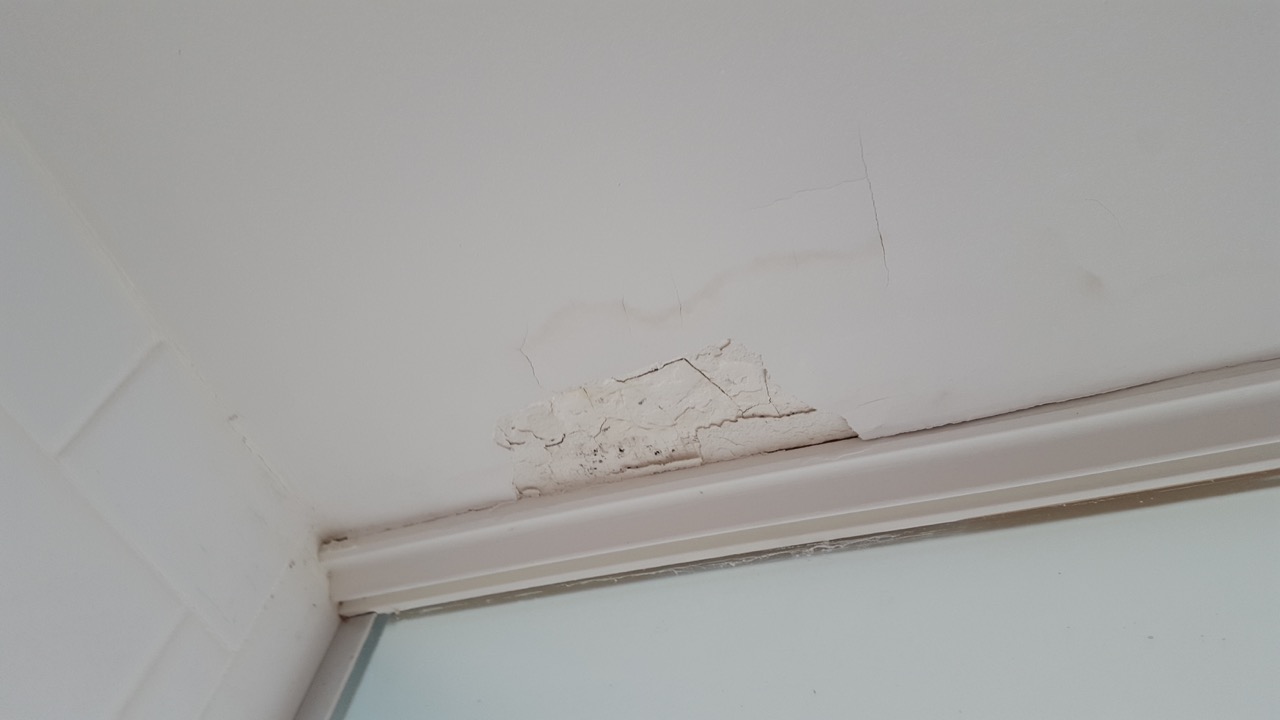Home>diy>Building & Construction>What Are Liquidated Damages In Construction


Building & Construction
What Are Liquidated Damages In Construction
Modified: December 7, 2023
Discover the meaning and importance of liquidated damages in building construction. Learn how they protect parties from financial loss and ensure project completion.
(Many of the links in this article redirect to a specific reviewed product. Your purchase of these products through affiliate links helps to generate commission for Storables.com, at no extra cost. Learn more)
Introduction
In the world of construction, time is money. Delays in completing a project can result in significant financial losses for all parties involved. To mitigate this risk, a common practice in construction contracts is the inclusion of liquidated damages provisions. Liquidated damages serve as a form of compensation for the delayed completion of a construction project.
In this article, we will delve into the concept of liquidated damages in construction, exploring their definition, purpose, calculation, enforceability, and limitations. By understanding the intricacies of liquidated damages, both contractors and project owners can better navigate the complexities of construction projects and ensure their successful completion.
Key Takeaways:
- Liquidated damages provisions in construction contracts serve to incentivize timely project completion, provide clarity on consequences of delays, and protect owners from financial losses, contributing to successful project execution.
- Factors such as project complexity, time sensitivity, and industry standards influence the calculation and enforceability of liquidated damages. Careful consideration and legal consultation are essential to ensure fairness and compliance.
Read more: What Is Liquid Glass
Definition of Liquidated Damages
Liquidated damages, in the context of construction, refer to the predetermined amount of money that a contractor or subcontractor will be required to pay to the project owner in the event of a project delay. These damages are agreed upon and outlined in the construction contract, serving as a measure of compensation for the financial losses incurred by the owner due to the delay.
The purpose of including liquidated damages provisions in construction contracts is to provide clarity and predictability regarding the consequences of project delays. By establishing a predetermined amount, the parties involved can avoid time-consuming and costly disputes over actual damages. It provides a fair and efficient way to hold contractors accountable for delays while also protecting owners from financial harm.
It is important to note that liquidated damages are different from punitive damages, which are intended to punish the party at fault. Liquidated damages, on the other hand, are compensatory in nature, aimed at compensating the owner for their actual losses.
To be valid, liquidated damages must meet certain criteria. Firstly, they must be a genuine pre-estimate of the loss that the owner is likely to suffer as a result of the delay. Secondly, the amount should be reasonable and proportionate to the anticipated loss. Lastly, the liquidated damages clause must be properly drafted and included in the contract, clearly stating the amount and conditions of liability.
Purpose of Liquidated Damages in Construction
The primary purpose of including liquidated damages provisions in construction contracts is to incentivize timely project completion and compensate the owner for the financial losses incurred due to project delays. These provisions serve several important purposes in the construction industry:
- Encouraging prompt project completion: By stipulating a specific amount of liquidated damages for each day of delay, contractors are motivated to complete their work within the agreed-upon timeline. The fear of financial penalties pushes contractors to allocate sufficient resources, manage their teams efficiently, and address any potential delays promptly.
- Providing clarity and predictability: Liquidated damages provisions establish a clear understanding between the owner and the contractor about the consequences of project delays. This clarity helps reduce disputes and disagreements regarding the assessment of actual damages, saving both time and money in potential litigation.
- Protecting the owner’s financial interests: Construction projects often have strict deadlines due to various factors such as financing arrangements and external dependencies. Delays can result in increased costs, lost revenue, and disruption to business operations. Liquidated damages provide the owner with a form of compensation, ensuring they are protected from these financial losses in case of project delays.
- Allocating risk between parties: Construction projects involve inherent risks, including delays that are beyond a contractor’s control, such as inclement weather or unforeseen site conditions. By including liquidated damages provisions, the parties can agree on how these risks will be allocated. Contractors can account for potential penalties in their pricing, while owners can have peace of mind knowing they will be compensated for delays caused by the contractor’s actions or inactions.
- Encouraging fairness and equitable outcomes: Liquidated damages ensure that both parties bear their respective responsibilities in the event of a project delay. It prevents one party from unfairly benefiting from delays at the expense of the other. Additionally, it promotes fairness by ensuring that the owner receives compensation that is commensurate with the damages suffered, rather than relying on uncertain and subjective assessments of actual damages.
Overall, liquidated damages provisions are a vital tool in construction contract management. By providing incentives for timely completion and protecting the owner’s financial interests, they contribute to the successful and efficient execution of construction projects.
Factors Affecting Liquidated Damages
When determining the amount of liquidated damages in a construction contract, several factors come into play. It is essential for both parties to consider the following factors to ensure that the agreed-upon liquidated damages are fair and reasonable:
- Project Complexity: The complexity of the project can significantly impact the potential for delays and the magnitude of financial losses for the owner. Projects with intricate designs, specialized materials, or unique site conditions are more likely to experience delays, and therefore, may warrant higher liquidated damages to compensate for the increased risks and potential losses.
- Contract Value and Scope: The size and scope of the construction project can influence the amount of liquidated damages. Large-scale projects with higher value contracts may involve more substantial financial risks for the owner in case of delays, and thus, higher liquidated damages may be warranted. Similarly, projects with multiple phases or stages may have separate liquidated damages amounts for each phase, reflecting the different risks and impacts on project completion.
- Time Sensitivity: Some construction projects have strict deadlines due to specific requirements or external factors. For example, a project to build a new school must be completed before the start of the academic year. In such cases, liquidated damages may be higher to incentivize the contractor to meet the critical timeline and compensate the owner for the potential negative consequences of a delay.
- Industry Standard: Industry practices and standards can influence the determination of liquidated damages. Contractors and owners may refer to similar projects or industry guidelines to establish a reasonable amount for compensation. This helps ensure consistency across projects and reduces the potential for disputes related to the adequacy of the liquidated damages amount.
- Negotiations and Bargaining Power: The relative bargaining power of the parties can impact the negotiation of liquidated damages. Owners may have more leverage to request higher liquidated damages amounts if they hold a stronger market position, while contractors with specialized expertise or high demand for their services may have more influence in negotiating lower liquidated damages. Ideally, the agreed-upon amount should strike a balance between the owner’s need for compensation and the contractor’s ability to deliver the project on time.
By considering these factors, both parties can determine an appropriate amount for liquidated damages that reflects the specific circumstances of the construction project. It is crucial to ensure that the liquidated damages provisions are fair, reasonable, and aligned with the potential risks and financial losses that may arise from project delays.
When negotiating a construction contract, be sure to carefully review and understand the liquidated damages clause. This provision specifies the amount of money a party must pay if they breach the contract, so it’s important to ensure the amount is fair and reasonable.
Calculation of Liquidated Damages
The calculation of liquidated damages in construction contracts is typically based on a predetermined daily or weekly rate. The specific formula for calculating the liquidated damages amount can vary depending on the contractual agreement. Below are two common methods used for calculating liquidated damages:
- Fixed Rate: In this method, a fixed rate per day or per week is agreed upon in the contract. For example, the contract may state that the contractor will be liable to pay $500 per day for each day of delay beyond the agreed-upon completion date. The total liquidated damages will be calculated by multiplying the fixed rate by the number of days of delay. This method provides simplicity and ease of calculation.
- Stipulated Sum: In some cases, the contract may specify a stipulated sum as the total amount of liquidated damages, rather than a daily or weekly rate. This fixed amount serves as the compensation for any delays that occur. For example, if the stipulated sum is $50,000, the contractor will be required to pay this amount to the owner for any delay beyond the agreed-upon completion date. The stipulated sum method provides a straightforward and predetermined amount of compensation.
It is important to note that the calculation of liquidated damages should be reasonable and proportionate to the potential financial losses suffered by the owner due to project delays. The agreed-upon rate or stipulated sum should be a genuine pre-estimate of the anticipated loss, rather than a punitive amount designed to penalize the contractor.
When determining the daily or weekly rate, or the stipulated sum, several factors are typically considered, including the project’s value, complexity, and time sensitivity, as discussed earlier. Additionally, the negotiation process between the owner and the contractor plays a significant role in determining the final liquidated damages amount.
If the project experiences multiple delays or the contractor fails to meet intermediate milestones, the liquidated damages may be calculated cumulatively, with each delay or milestone default incurring an additional sum. However, it’s important to ensure that the cumulative liquidated damages do not exceed the predetermined maximum limit stated in the contract.
By establishing a clear and fair method of calculating liquidated damages, both parties can have a transparent understanding of the potential financial implications of project delays, fostering accountability and mitigating disputes.
Enforceability of Liquidated Damages
The enforceability of liquidated damages in construction contracts is subject to certain legal principles and considerations. While liquidated damages provisions are commonly included in contracts, it is crucial for these provisions to be valid and enforceable under the laws governing the contract.
To ensure enforceability, the following factors are typically considered:
- Reasonableness: For liquidated damages to be enforceable, they must be a genuine pre-estimate of the potential loss that the owner is likely to suffer in the event of a project delay. The predetermined amount should be reasonable and proportionate to the anticipated damages. If the court determines that the amount is excessive, it may be considered a penalty and deemed unenforceable.
- Adequate Compensation: Liquidated damages should provide adequate compensation to the owner for the actual financial losses suffered due to the delay. The provision should be drafted in such a way that it compensates for direct costs, additional administrative expenses, and potential loss of revenue or business opportunities resulting from the delay.
- Certainty: The liquidated damages provision must be clear and specific in terms of the amount, criteria, and conditions triggering liability. Ambiguous or vague terms may render the provision unenforceable. It is essential to clearly state the consequences of a project delay and the calculation methodology to avoid interpretation issues.
- Mutual Agreement: Liquidated damages are only enforceable if both parties freely and willingly agree to the provision. Both the owner and the contractor should have the opportunity to negotiate and understand the terms of the liquidated damages clause before incorporating it into the contract.
- Avoiding Penalties: Liquidated damages should not be designed to punish the contractor but rather to compensate the owner for their actual losses. If the provision is perceived as a penalty or deterrent, it may be deemed unenforceable. Courts will typically analyze the substance and purpose of the provision to determine whether it is intended as a genuine pre-estimate of damages or as a punishment.
It is important to consult with legal professionals experienced in construction contract law to ensure that the liquidated damages provision meets all necessary legal requirements and is enforceable in the relevant jurisdiction. Clear and transparent communication between the parties during contract negotiation is key to avoiding disputes regarding the enforceability of liquidated damages.
While liquidated damages clauses are intended to streamline and simplify the process of compensation for project delays, it is worth noting that if the liquidated damages provision is found to be unenforceable or invalid, the parties may need to resort to proving actual damages in court, which can be a complex and costly process.
Limitations and Exceptions to Liquidated Damages
While liquidated damages provisions are a valuable tool in construction contracts, there are limitations and exceptions that must be considered. These limitations and exceptions aim to ensure fairness, prevent abuse, and protect the parties involved:
- Unforeseeable Circumstances: If the project delay is caused by an unforeseeable event or circumstance beyond the control of the contractor, such as acts of nature or government intervention, the liquidated damages may not be enforceable. In such cases, the doctrine of force majeure or an equivalent provision may apply to excuse the contractor from liability.
- Unconscionability: If the liquidated damages provision is found to be unconscionable, meaning it is excessively unfair or one-sided, a court may refuse to enforce it. This typically pertains to situations where the damages specified are unreasonably high and vastly disproportionate to the actual losses suffered.
- Mutual Agreement: If the parties mutually agree to waive or modify the liquidated damages provision after the contract is executed, such agreement may be binding and could impact the enforceability of the provision. It is essential to document any changes in writing to avoid disputes in the future.
- Actual Damages: In some cases, a party may assert that the actual damages suffered due to the project delay exceed the amount specified in the liquidated damages provision. In such situations, the injured party may seek to recover additional damages beyond the liquidated damages amount. However, demonstrating the actual damages incurred can be challenging and may require a thorough analysis and documentation of the financial impact caused by the delay.
- Mandatory Legal Limitations: Some jurisdictions have statutory limitations on the enforceability of liquidated damages provisions. These limitations may define a maximum allowable amount or impose other requirements that must be met for the provision to be enforceable. It is important to consult local laws and seek legal advice to ensure compliance with any applicable regulations.
It is crucial for both parties to carefully review the liquidated damages provision in the contract and understand its implications. Engaging legal professionals with expertise in construction law can help ensure that the provision is fair, enforceable, and compliant with relevant laws and regulations.
Additionally, it is worth noting that the courts have the authority to modify or reduce the liquidated damages amount if it is found to be unjust or unreasonable. This emphasizes the importance of ensuring that the liquidated damages provision is reasonable and accurately reflects the anticipated losses resulting from the project delay.
By keeping these limitations and exceptions in mind, both parties can approach liquidated damages provisions with a clear understanding of their rights and responsibilities, fostering a fair and equitable contractual relationship in the construction industry.
Conclusion
Liquidated damages provisions play a crucial role in construction contracts, serving as a mechanism to compensate the owner for financial losses resulting from project delays. By incentivizing timely completion and providing clarity regarding the consequences of delays, these provisions contribute to the successful execution of construction projects.
Understanding the definition, purpose, factors affecting, calculation, enforceability, and limitations of liquidated damages is essential for both contractors and owners. By considering the project complexity, contract value, time sensitivity, industry standards, and negotiations, parties can determine an appropriate and fair amount for liquidated damages.
However, it is important to ensure that liquidated damages are reasonable and proportionate to the potential loss suffered by the owner. The provisions must be clear, agreed upon, and enforceable under the applicable laws. Unforeseeable circumstances, unconscionability, mutual agreement, actual damages, and legal limitations can all impact the enforceability and applicability of liquidated damages.
To mitigate disputes and ensure that the liquidated damages provision is fair and enforceable, it is advisable to consult legal professionals experienced in construction contract law. Both parties should engage in open and transparent communication during contract negotiation to avoid misunderstandings and potential conflicts down the line.
Ultimately, the inclusion of a well-drafted and enforceable liquidated damages provision provides a measure of certainty and protection for both contractors and project owners. It promotes accountability, encourages timely completion, and provides a fair mechanism for compensating the owner’s financial losses due to project delays.
By carefully considering and addressing the factors and considerations surrounding liquidated damages, parties can navigate the complexities of construction projects with confidence, ensuring successful outcomes and minimizing the risks associated with project delays.
Frequently Asked Questions about What Are Liquidated Damages In Construction
Was this page helpful?
At Storables.com, we guarantee accurate and reliable information. Our content, validated by Expert Board Contributors, is crafted following stringent Editorial Policies. We're committed to providing you with well-researched, expert-backed insights for all your informational needs.















0 thoughts on “What Are Liquidated Damages In Construction”